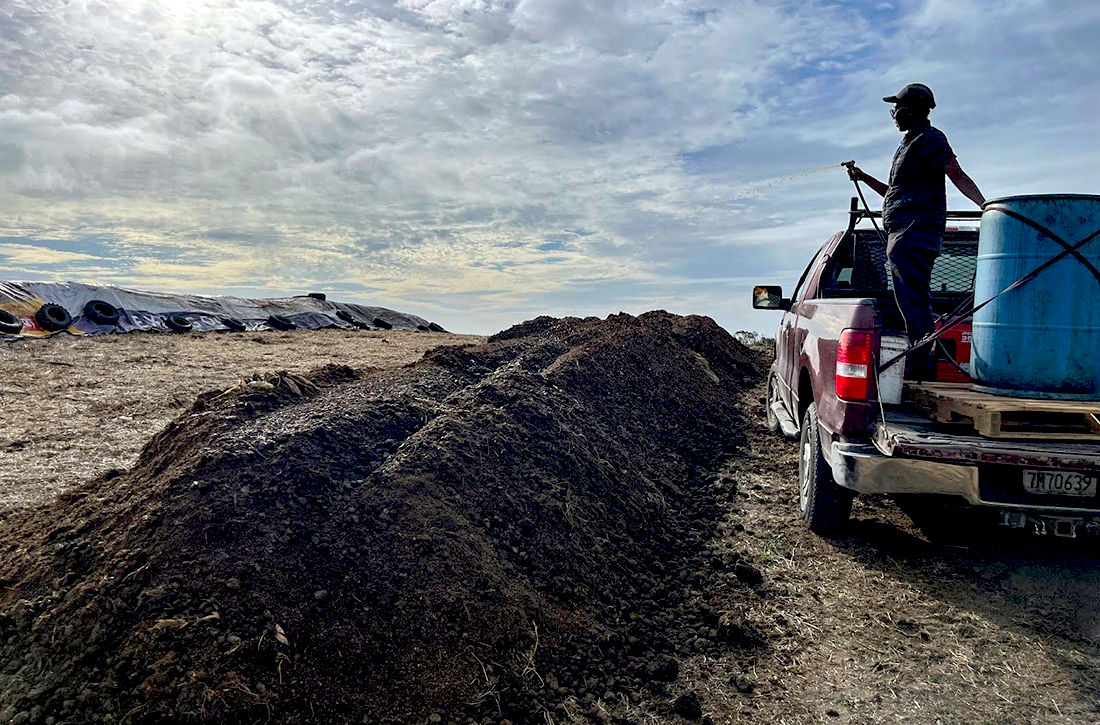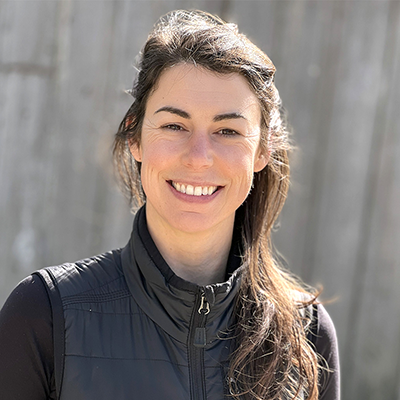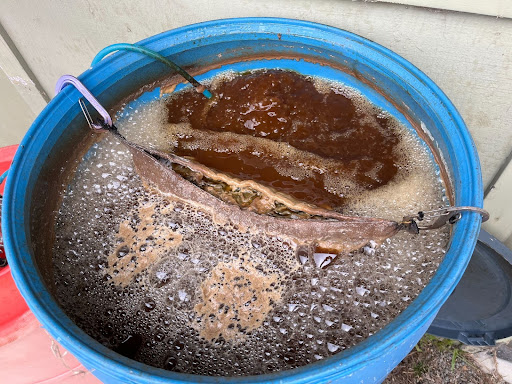If you ask our master gardener, Susan, “What is compost” you’re likely to get an esoteric answer—compost is alchemy, compost is a gift that keeps giving, compost is life.
From Death Comes Life, Talking Compost with our Master Gardener Susan Hadacek

12/19/2023
By: Authors: Susan Hadacek and Jessica Hartzell

 If you ask our master gardener, Susan, “What is compost” you’re likely to get an esoteric answer—compost is alchemy, compost is a gift that keeps giving, compost is life. But most importantly, compost is an incredibly rich soil amendment, a process for turning the lifeless into life, and therefore talking about compost is in the mix of what we share in our gardens and tours.
If you ask our master gardener, Susan, “What is compost” you’re likely to get an esoteric answer—compost is alchemy, compost is a gift that keeps giving, compost is life. But most importantly, compost is an incredibly rich soil amendment, a process for turning the lifeless into life, and therefore talking about compost is in the mix of what we share in our gardens and tours.
Why build soil with compost?
Soil is what is found on the ground under our feet, on our lawns, our gardens, landscapes, and rangeland. It may or may not be teeming with life, often evident when gardens burst with bounty or crops fail to thrive. A well-prepared compost will contain an incredibly diverse and abundant web of microbial life, critical to healthy soil. This microbial community includes bacteria, fungi, protozoa, nematodes, arthropods, and worms.
Composting is the process of mixing organic material made from the right amount of nitrogen (for protein) and carbon (for energy), with the right amount of air, moisture, warmth, and time. These elements create a perfect environment for that web of microbial life to thrive and work its magic on the organic material. Once that finished compost is added to soil, that ‘food web’ will condition the soil, giving the life withinmore space to grow, improve what’s already there, feed plants, and even inoculate them from pests. Building and maintaining the web of life is a basic tool of regenerative farming and gardening: either using compost and cover crops to protect and feed the soil food web, or no-till practices in order to leave the web as intact as possible.
How do we approach compost?
Since 2019, our team has been using a technique of biofermentation and static composting in windrows and piles, or Static Pile Inoculated Compost Extension (SPICE). The inoculation mixtures of fermented microorganisms are made in conditions of low/no oxygen levels; they can be made easily on-site and applied directly to the compost. Bioferments can provide several beneficial functions to soils and plants including improving the cycling of nutrients, chelating nutrients, stimulating root growth, reducing plant stress, and increasing plant health.
We’ve chosen the SPICE method for several reasons. First, we accumulate tons (literally, tons) of horse manure and shavings from our herd yearly, along with kitchen waste and green waste from the gardens, so we have a lot of material to turn over in a regenerative way. Second, biofermentation, when applied to a static or low-turning pile, requires lower temperatures. While the lower temperatures necessarily mean that completion times run around one to two years, we are not in a hurry. We can use the gift of time and space to wait for the process to complete, thus less management is needed.

Is creating compost more art or science?
It is art and science! Or more like it takes good observation skills as well as taking temps and testing—looking, feeling, even smelling are all good ways to determine how the process is going. For example, this year, when we tested the temperature in our piles, we discovered that despite having SPICE inoculant applied and the pile mixed, the temperature did not reach the desired 149F to 158F. On the first go, the piles were way too dry. With the second try, we came to believe that the carbon vs. nitrogen ratio was out of balance. (The SPICE piles should have about 25-50 Carbon to 1 Nitrogen.)
To address the issue, we considered sourcing additional nitrogen sources from local farms or around the ranch and using the tractor to turn the piles. In the past, mushroom compost has been particularly useful but hard to source. After much deliberation, we chose to keep the project simple and lean into the gift of time—as an easy solution, we will reduce the amount of horse shavings that go into the piles and allow them to sit through the wet season for re-testing in late spring. If we find that the temperature is too low at that time, we will re-innoculate and consider additional nitrogen sources again.
Nothing beats the process of trial and error, or the application of time, when you’re transforming dead material into a living web.
Can we compost without a tractor?
Yes of course! Knowing your context, and depending on available space, material to compost, available energy and time, and use or purpose of finished compost will determine what method is best for you. A few methods to consider for a small-scale farm or garden: a raised bin, a pit or hugelkultur, bokashi method, compost tumblers, Johnson-Su bioreactor, biodynamic, mulch, or sheet composting. There are endless resources to assist you in finding the right method for composting. Below are some great resources to get you started, and remember: Nothing beats getting your hands dirty and experimenting!
- One of our favorite resources on composting is The Rodale Book of Composting (we use the 1992 version but it was revised in 2018).
- For a holistic approach, Regenerative Agriculture, A Practical Whole System Guide to Making Small Farms Work by Richard Perkins.
- For an organic gardener’s guide, Teaming With Microbes, The Organic Gardener’s Guide to the Soil Food Web by Jeff Lowenfels and Wayne Lewis.
- And to get into the weeds, so to speak, The Secret Life of Compost, by Malcom Beck